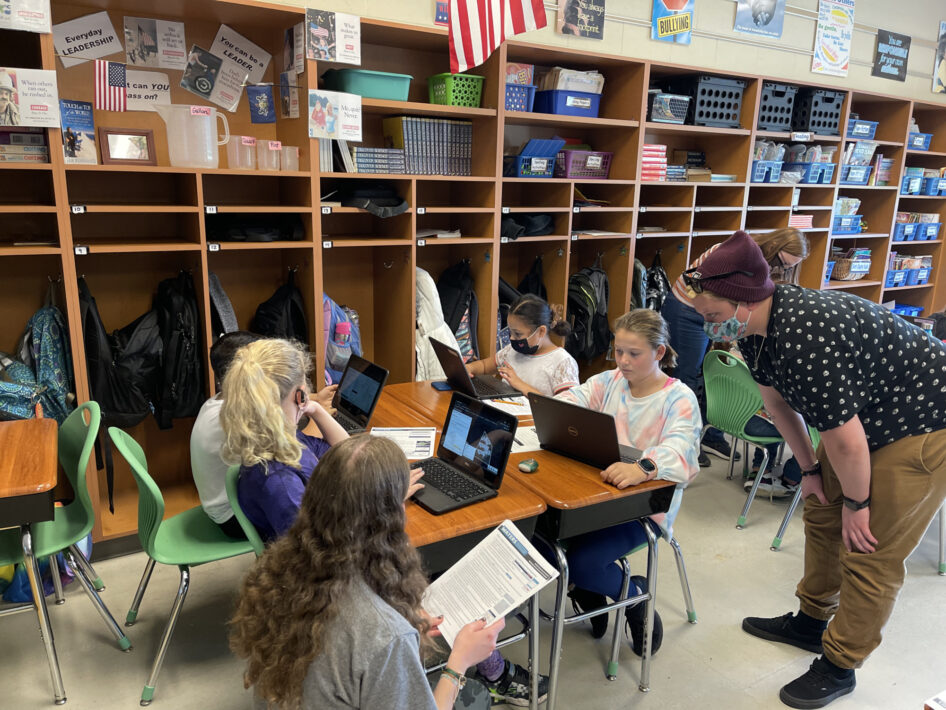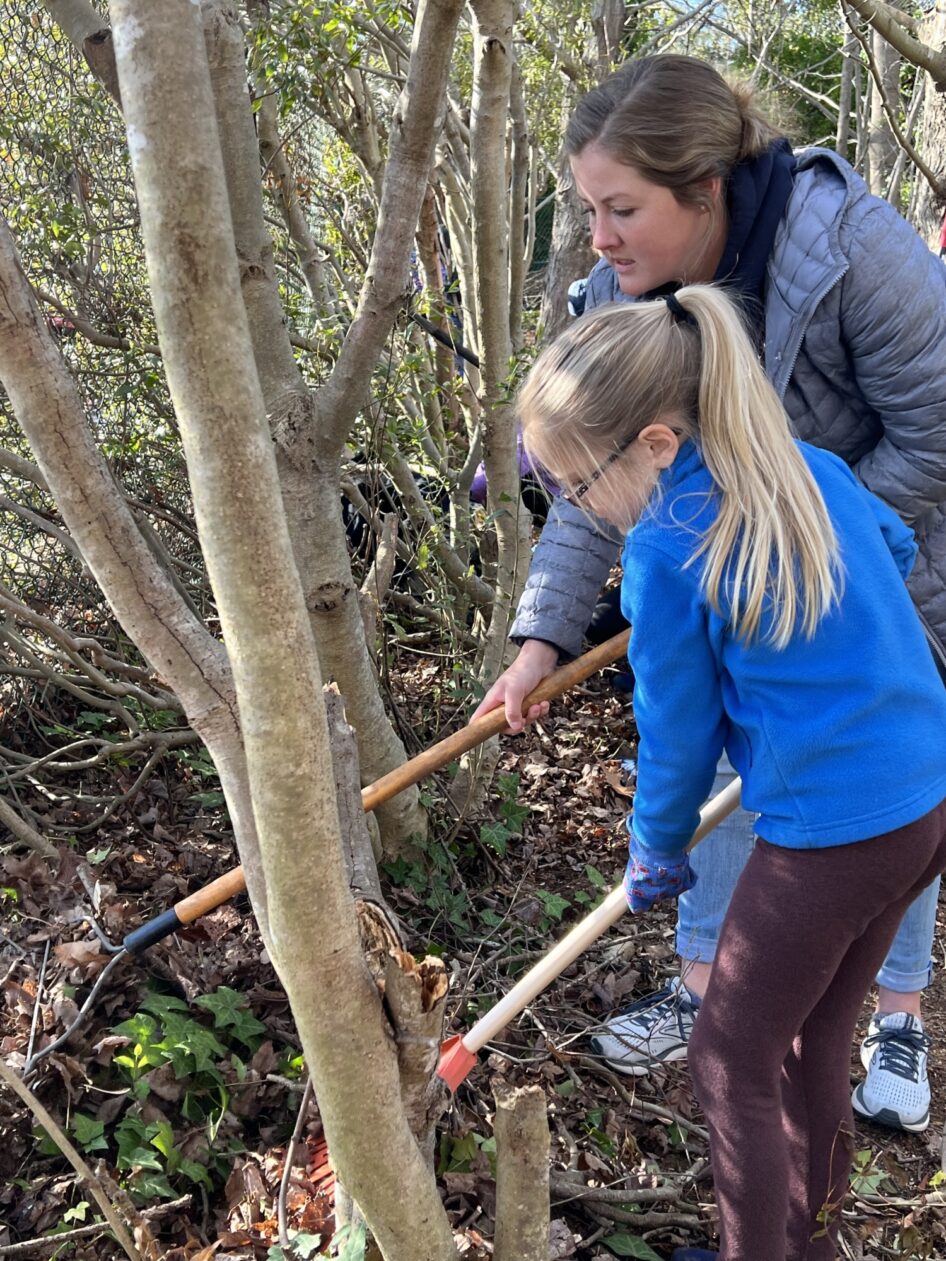Preservice Teacher Education and MWEEs

Over twenty years ago, McKeown (2000) sent a survey to hundreds of teacher education programs in the United States to investigate how they were addressing Environmental Education (EE) with preservice teachers. The findings were bleak. Evidence suggested that, in general, teacher education programs were not preparing preservice teachers to effectively implement environmental education with their students. Understanding the context of teacher education, this is less than surprising. State, national, and accreditor mandated standards/competencies make it difficult to squeeze anything “extra” into the curriculum. However, through a NOAA-funded project entitled, Shared Waters: An upstream/downstream collaborative, Virginia Wesleyan and Millersville Universities are investigating unique ways to institutionalize EE, using Meaningful Watershed Educational Experiences (MWEEs), into preservice teacher education.
EE fits almost anywhere!
EE teacher training doesn’t have to be reserved for stand-alone EE courses or a small part of a teaching methods course. In fact, we have found that incorporating EE through MWEEs provide an incredibly rich learning context for some of the most common teacher education courses: Classroom Management and Instructional Technology. Below, we share how MWEEs are enhancing the learning experiences of preservice teachers enrolled in these courses.
Classroom Management
An overarching goal of classroom management coursework is that preservice teachers understand and learn to implement effective classroom management techniques. The inquiry-based activities, student-centered context, and outdoor experiences of MWEEs provide an extraordinary opportunity to learn about behavior management. Some of the unique management situations that our particular MWEE provided preservice teachers included, but were not limited to the following:
- Keeping students walking quietly in line up three flights of stairs to the roof to investigate heat energy readings on three different roof types. Then, keeping students from climbing on the roof railing!
- Making sure students use gardening tools safely when removing invasive species and planting native species.
- Navigating students’ fears of outdoor critters and keeping students safe and out of the water during hands-on investigations.
- Partnering with students to co-construct investigations and action plans.
- Maintaining the attention of students when outdoor distractors are present.
Field experience debriefings and end of course reflections suggested that the context of the MWEE had a profound impact on preservice teachers.
“Even though there is a lot of management to think about when taking students outside, it is so worth it! The students were so proud of their work and are making a real difference in their environment.”
- Brynn, preservice teacher
“At the beginning of this course, I felt like science might be my least favorite subject to teach, but that is not the case anymore. I am much more confident about teaching science and about management after this course.”
- Janae, preservice teacher
“Even though we modeled correct use of the tools, it was important we had a plan for what to do when rules weren’t followed. I didn’t expect (student) to use his rake like a hatchet on trees! We were consistent with our management plan when things didn’t go as we expected, and I think that prevented any big issues.”
- Ryan, preservice teacher


Instructional Technology
The focus of this required technology course is to use instructional design and assessment as a basis for planning and evaluating the use of technology for student-centered teaching and learning within specific disciplines. For most of our teacher candidates, this experience is their very first formal teaching experience, so we make sure to provide them with enough training and provide them with content-based knowledge as well.
Some of the unique uses of instructional technology that our MWEE provided preservice teachers included, but were not limited to the following:
- Preservice teachers used the SAMR (Substitution, Augmentation, Modification, and Redefinition) Model to design engaging lessons and activities for 4th-grade students by exploring run-off and the ways it is affecting our environment. The run-off simulation is an easy to use, free online simulation developed by the Stroud Water Research Center that enables users to make various changes (e.g., amount of precipitation, land cover type, direction of downpour, and pollutants) based on the phenomenon under investigation. This helped students gain the background knowledge needed for their outdoor investigations
- Preservice teachers led the activities they created with 4th-grade students which gave the students the opportunity to come up with some practical solutions by modifying their local environment.
- Fourth-grade students came up with some mitigation plans by redesigning their environment using the Stroud Center’s Model My Watershed®. The website is an up-to-date and real-time simulation that provides accurate data of any locality under investigation.

Moving forward, especially toward the end of the semester, the teacher candidates expressed appreciation for this opportunity and showed their unreserved commitment to these activities and the teaching profession in general.
As you can see from the descriptions above, incorporating MWEEs as collaborative learning experiences between preservice teachers, K-12 teachers and their students, provides teacher educators an opportunity to train preservice teachers in EE pedagogy while simultaneously enhancing their learning of required course content. What better way to practice behavior management than with elementary students wielding gardening tools?
Contact the program leads to learn more
Bill McConnell wmcconnell@vwu.edu
Nanette Marcum-Deitrich- Nanette.Marcum-Dietrich@millersville.edu
Abdul Ibrahim - Abdulsalami.Ibrahim@millersville.edu
